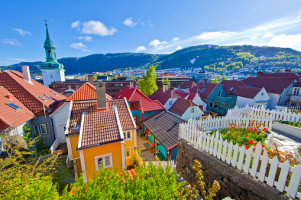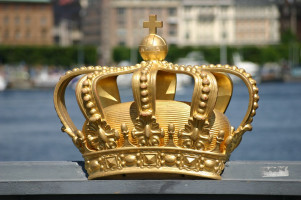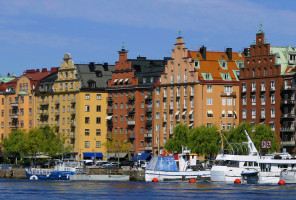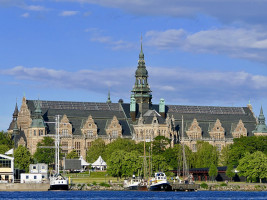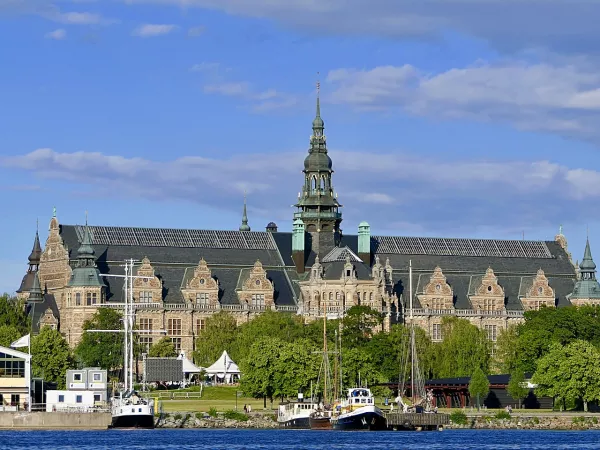
Stockholm Travel Guide
Stockholm, the capital of Sweden, is a beautiful city spread across 14 islands connected by 57 bridges. Known for its historic charm, stunning architecture, and vibrant culture, Stockholm is a must-visit destination for any traveler. The city boasts a rich history dating back to the 13th century, with well-preserved medieval buildings and royal palaces. Its picturesque waterfront, cobblestone streets, and modern design scene make it a unique blend of old and new.Top Attractions in Stockholm
- Gamla Stan (Old Town)
- Vasa Museum
- Djurgården Island
- ABBA The Museum
- Skansen Open-Air Museum
Stockholm is Famous for
Being famous for its stunning archipelago, Stockholm offers visitors the chance to explore over 30,000 islands, islets, and rocks.Top Attractions in Stockholm
- Exploring the picturesque Gamla Stan
- Marveling at the Vasa Museum's preserved warship
- Strolling through Djurgården's green spaces
- Immersing in ABBA's pop music history
- Experiencing traditional Swedish culture at Skansen
What's Great about Travelling to Stockholm?
- Rich history and culture
- Beautiful architecture and design
- Scenic waterfront views
- Great shopping and dining options
- Safe and friendly environment
What's Not So Great about Travelling to Stockholm?
- High cost of living
- Cold winters
- Limited daylight in winter months
- Crowded tourist areas in peak season
- Language barrier for non-Swedish speakers
Travel Tips for Stockholm
- Check visa requirements before traveling
- Use public transportation or rent a bike to get around
- Stay aware of pickpockets in tourist areas
- Respect local customs and traditions
- Try traditional Swedish dishes like meatballs and herring
Important Stockholm trip information
- Ideal Duration: A week to fully explore the city and surrounding areas.
- Best Time to Visit: Summer months from June to August for pleasant weather.
- Nearby Airports and Railway Stations: Arlanda Airport and Stockholm Central Station are the main transport hubs.
Per Person
1,56,522
*EXCLUDING APPLICABLE TAXES 5.0 Ratings
( 393 Reviews )
( 393 Reviews )
Per Person
41,795
*EXCLUDING APPLICABLE TAXES 5.0 Ratings
( 393 Reviews )
( 393 Reviews )
Per Person
70,619
*EXCLUDING APPLICABLE TAXES 5.0 Ratings
( 393 Reviews )
( 393 Reviews )
Per Person
83,108
*EXCLUDING APPLICABLE TAXES 5.0 Ratings
( 393 Reviews )
( 393 Reviews )
Per Person
86,472
*EXCLUDING APPLICABLE TAXES 5.0 Ratings
( 393 Reviews )
( 393 Reviews )
Per Person
1,15,776
*EXCLUDING APPLICABLE TAXES 5.0 Ratings
( 393 Reviews )
( 393 Reviews )
FAQ's on Stockholm
Q1: What is the best time to visit Stockholm?
The best time to visit Stockholm is during the summer months from June to August when the weather is mild, and the city comes alive with outdoor events, festivals, and long daylight hours. However, if you prefer fewer crowds and lower prices, consider visiting in the shoulder seasons of spring (April to May) or fall (September to October). Winter can be magical with snow-covered landscapes, but be prepared for cold temperatures and shorter days.
Q2: Do I need a visa to travel to Stockholm?
Most tourists do not need a visa to travel to Stockholm if they are staying for up to 90 days within a 180-day period. However, it is essential to check visa requirements based on your nationality before traveling. Make sure your passport is valid for at least three months beyond your planned departure date.
Q3: What are the must-visit attractions in Stockholm?
Stockholm offers a wealth of attractions, including the historic Gamla Stan (Old Town), the Vasa Museum showcasing a salvaged 17th-century ship, the ABBA Museum for music lovers, and the beautiful Royal Palace. Don't miss exploring the trendy neighborhood of Södermalm or taking a boat tour of the archipelago islands.
Q4: Is Stockholm a safe place to travel?
Stockholm is generally considered a safe destination for travelers. However, like any city, it is essential to be cautious of pickpocketing in crowded areas and to avoid walking alone in isolated areas at night. The city has efficient public transportation, making it easy to get around safely.
Q5: What is the local currency in Stockholm and can I use credit cards?
The local currency in Stockholm is the Swedish Krona (SEK). Credit cards are widely accepted in hotels, restaurants, and shops. ATMs are also readily available throughout the city for easy access to cash. It's a good idea to inform your bank of your travel plans to avoid any issues with using your cards abroad.
Q6: What is the local cuisine like in Stockholm?
Stockholm offers a diverse culinary scene with traditional Swedish dishes like meatballs, herring, and smoked salmon. Don't miss trying a fika (coffee break) with delicious pastries. The city also boasts international cuisines, trendy cafes, and Michelin-starred restaurants. Vegetarian and vegan options are widely available.
Q7: What transportation options are available in Stockholm?
Stockholm has an efficient public transportation system, including buses, trams, the metro (T-bana), and ferries. You can also explore the city by bike or on foot, especially in the pedestrian-friendly areas. Taxis and ride-sharing services are also convenient for getting around the city.
Q8: Are there any cultural norms or etiquette I should be aware of when visiting Stockholm?
When visiting Stockholm, it's important to respect the locals' personal space and privacy. Swedes appreciate punctuality and honesty, so be on time for appointments and avoid exaggerating or boasting. Removing your shoes when entering someone's home is a common custom. Remember to greet people with a handshake and maintain eye contact during conversations.
Q9: I am a travel agent. How can I buy travel leads of Stockholm?
Register yourself as a travel agent at agents.tripclap.com and then you can buy travel leads to Stockholm once your account is approved. For more details contact our support team at +91-8069186564 or support@tripclap.com
